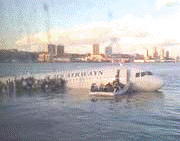Bird Strike Committee Proceedings

Bird Strike Committee-USA/Canada Joint Annual Meeting: 10th (2008)
Date of this Version
8-2008
Document Type
Article
Abstract
Over the past decade development of specialized avian radar systems for use as real-time aircraft birdstrike avoidance systems has moved from research and development into active deployment of the technology as an operational tool by airfield managers, bird control units and air traffic controllers. Today there are some 50+ known avian radar systems in operation worldwide supporting aviation safety and environmental applications with a number of systems being used daily by air traffic controllers for airfield flight safety. When manufacturers such as Geo-Marine and DeTect initially committed to developing production model systems for real-time operational use, market studies indicated that, while users recognized the potential value of real-time bird activity information, available budgets would not initially support high cost solutions. As such, operational systems deployed over the past seven years have typically used commercial-off-the-shelf hardware, most notably commercial marine radar sensors. However, now that a number of systems are in use at airfields with a documented history of solid return on investment (ROI), users are asking for systems with higher performance and expanded capabilities and features, and are showing a willingness to support the resultant increased system cost. This paper will present information on the enhancements and improvements currently in development for the “next generation” of operational Aircraft Birdstrike Avoidance Radars that are expected to come on the market in 2009 to include features such as Doppler and true 3-D radar sensors, custom-engineered bird detection antennas, secondary sensors for integrated airfield information systems; and, secondary functionality such as ground, marine and airspace security.


Comments
Abstract of paper presented at Bird Strike Committee USA/Canada Meeting, Lake Mary and Sanford, Florida, August 18–21, 2008.